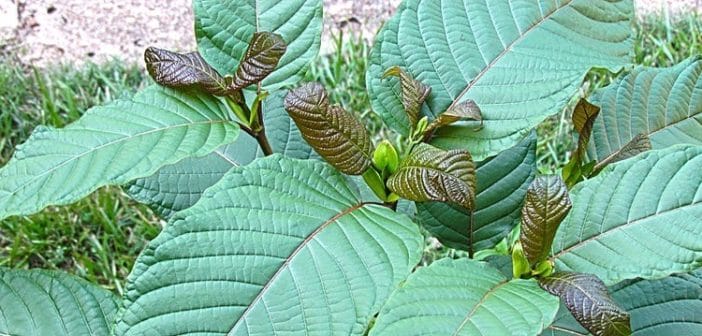 Kratom is a new type of opioid that has been gradually gaining in popularity in the United States. In southeast Asia, where the drug originates, people often chew the leaves of the kratom tree. This leads to a mild stimulant effect. Now, some people claim that kratom may help to overcome opioid withdrawal. In reality, research shows that kratom is a dangerous opioid with a high potential for abuse and addiction.
Kratom is a new type of opioid that has been gradually gaining in popularity in the United States. In southeast Asia, where the drug originates, people often chew the leaves of the kratom tree. This leads to a mild stimulant effect. Now, some people claim that kratom may help to overcome opioid withdrawal. In reality, research shows that kratom is a dangerous opioid with a high potential for abuse and addiction.
Is Kratom an Opioid?
There has been significant controversy over whether the US Food and Drug Administration is correct in labeling kratom an opioid. The compound is derived from the plant Mitragyna speciosa, which grows naturally in southeast Asia. In the US, kratom commonly comes in pill, capsule, or extract form.
Kratom is somewhat unusual in that its effects depend on the dose a person takes. At low levels, kratom acts as a mild stimulant, similar to caffeine. At higher levels, however, kratom has sedative properties that are very similar to morphine and other opioids. These effects last for several hours after use.
New scientific analyses show that there are two major psychoactive compounds in kratom: mitragynine (MG) and 7-hydroxymitragynine (7-HMG). These compounds bind to opioid receptors in the brain and body. The chemicals have high similarity to morphine, including pain-killing effects. A recent study by researchers at High Point University in North Carolina investigated the effects of MG and 7-HMG on rats. The researchers found that MG is not addictive and can actually reduce morphine intake. However, 7-HMG has a very high potential for abuse and addiction. This means that it binds to brain areas that trigger intense cravings and need for more opioids. Furthermore, 7-HMG increased the rats’ need for other opioids. This suggests that people who take kratom may need more and more opioids to get the same effect, leading to abuse of heroin, prescription painkillers, and other drugs.
Kratom for Opioid Withdrawal
Kratom proponents say that the drug has medicinal properties and has been used safely for centuries in Thailand and other parts of southeast Asia. Now, kratom is being sold in the United States as a dietary supplement. Advocates for kratom claim that it can help with opioid withdrawal. The idea is that kratom binds to opioid receptors but is less addictive. Thus, people could take kratom to ease the effects of opioid withdrawal. Proponents of using kratom for opioid withdrawal say that the drug boosts energy, alleviates pain, lowers depression and anxiety, and creates feelings of euphoria.
In reality, taking kratom to overcome opioid withdrawal simply replaces one addiction with another. Kratom binds to the same receptors as heroin or prescription opioids. It even has similar effects, including a sense of euphoria and decreased sensation of pain. However, chronic kratom use leads to physical dependence, just like use of other opioids. Because of this physical dependence, kratom also results in withdrawal symptoms of its own. Kratom withdrawal is associated with diarrhea, loss of appetite, sweating, nausea, runny nose, muscle aches, and bone aches. It can also cause people to become irritable, aggressive, and anxious or depressed. These symptoms are similar to withdrawal from heroin or prescription painkillers, again highlighting the similarities between kratom and other opioids.
Understanding Kratom Addiction
Kratom addiction is a very real concern, despite advocates saying that the drug is natural and harmless. Taking kratom for several weeks or months causes your body to become accustomed to the drug. This leads to physical dependence in which you need more kratom to get the same effects. In addition to physical dependence, individuals who use kratom often become addicted to it. Addiction refers to behaviors in which people crave the drug and go out of their way to use it. Some kratom users continue to use it over the long term, while others switch to heroin or prescription painkillers for their more potent effects.
Like other opioids, it is possible to overdose on kratom. At least 15 people have died from kratom overdoses, although the exact numbers are not tracked well due to the legal gray area in which kratom lies. Because of the similarity between kratom and other opioids, treatment approaches for kratom addiction and opioid addiction are the same.
The best way to overcome kratom addiction is to go to a comprehensive treatment program that includes medical detox. Medical detox involves the administration of special drugs that clear opioids—including kratom molecules—from your opioid receptors. This causes you to go through the withdrawal process in a safe, controlled environment. That makes medical detox much safer than quitting cold turkey or using kratom in an attempt to treat withdrawal from other opioids. By accessing a comprehensive treatment program, you can overcome kratom addiction and live a healthy, opioid-free life.
Photo courtesy of ThorPorre [CC BY 3.0 (https://creativecommons.org/licenses/by/3.0)], from Wikimedia Commons (resized and cropped)
Sponsored DISCLAIMER: This is a paid advertisement for California Behavioral Health, LLC, a CA licensed substance abuse treatment provider and not a service provided by The Fix. Calls to this number are answered by CBH, free and without obligation to the consumer. No one who answers the call receives a fee based upon the consumer’s choice to enter treatment. For additional info on other treatment providers and options visit www.samhsa.gov.




